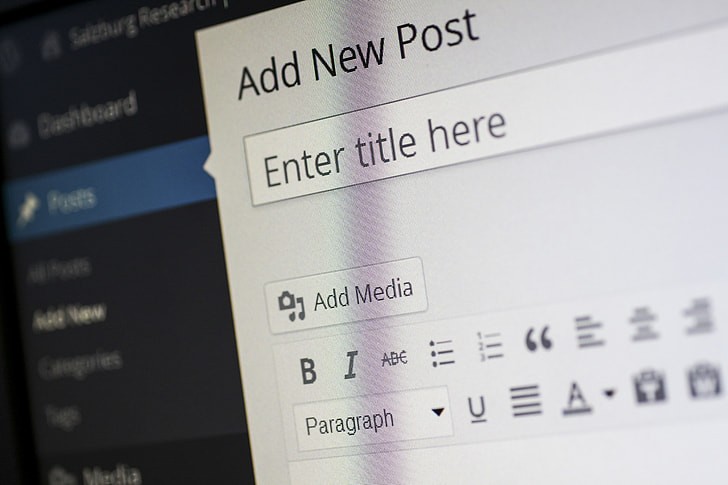
Creating exceptional content on WordPress is both an art and a science. It requires a blend of creativity, strategy, and technical savvy. Whether you're a seasoned blogger or just starting out, understanding how to craft content that resonates with your audience is crucial. This guide will walk you through the essential steps of elevating your WordPress blogging to the next level, ensuring that each post you publish is not only read but remembered.
Understanding Your Audience

Before you start typing away on your keyboard, it is vital to grasp who you are writing for. Defining your target audience is the first step towards creating content that truly connects. Are your readers looking for quick tips, in-depth tutorials, or thought-provoking insights? By understanding their interests, pain points, and online behavior, you can tailor your content to meet their needs and hold their attention.
Take the time to research and create audience personas, which are fictional representations of your ideal readers. This exercise will help you visualize the individuals you're trying to reach, making it easier to write in a way that feels personal and relevant. Consider their demographics, motivations, and the types of content they engage with most frequently. Use this information to guide your content strategy and inform the topics you choose to cover in your blog posts.
Crafting Compelling Headlines

\Your headline is the first, and sometimes only, impression you make on a prospective reader. With millions of posts vying for attention, a compelling headline can be the difference between a click and a scroll-by. A great headline should be clear, concise, and offer a promise of value. It should intrigue readers enough to make them want to discover more about what you have to say.
To craft headlines that stand out, employ proven formulas such as how-tos, lists, and questions that tap into your readers' curiosity. Use strong language that conveys emotion or urgency, and always aim for clarity over cleverness. Remember, a headline is a promise to your reader; make sure the content that follows delivers on that promise. Test different headlines to see which ones resonate most with your audience, and don't be afraid to revise them to improve click-through rates.
Structuring Your Posts for Readability
In the digital age, readability is key. The structure of your blog post can significantly impact how readers engage with your content. Long, unbroken blocks of text can be intimidating and may discourage readers from diving into your article. Instead, break your content into manageable sections with subheadings, bullet points, and short paragraphs.
Using subheadings effectively not only helps to organize your content but also makes it easier for readers to scan through and find the information that is most relevant to them. Subheadings should be descriptive and reflect the content of each section, guiding the reader through your post. Additionally, incorporating bullet points and numbered lists can help highlight key information and make complex topics more digestible. By structuring your posts for readability, you ensure that your message is clearly communicated and that your readers stay engaged from start to finish.
Leveraging Multimedia Elements

Text alone can sometimes fall flat in conveying your message. To truly captivate your readers, incorporate multimedia elements such as images, videos, infographics, and audio clips. Multimedia can break up text, illustrate points, and add a dynamic layer to your content. When used thoughtfully, these elements can enhance understanding, provide visual relief, and increase the time visitors spend on your site.
When selecting images or creating videos, prioritize quality and relevance. An eye-catching image can draw readers in, while a well-produced video can provide a deeper understanding of a complex subject. Infographics are particularly effective for summarizing data or processes in a visually appealing way. Remember to optimize all multimedia for web use to ensure fast loading times and to use alt tags for accessibility and SEO benefits. By incorporating diverse multimedia elements, you create a richer, more engaging experience for your audience.
Optimizing for Search Engines
While crafting exceptional content is your primary goal, ensuring that your content is discoverable by search engines is equally important. SEO (Search Engine Optimization) should be an integral part of your content creation process. Start by conducting keyword research to identify the terms and phrases your audience is searching for. Then, naturally integrate these keywords into your content, including your headlines, subheadings, and body text.
Beyond keywords, pay attention to other SEO factors such as meta descriptions, URL structure, and internal linking. A compelling meta description can improve the click-through rate from search engine results pages, while a clean, descriptive URL can enhance user experience and SEO. Internal linking helps search engines understand the structure of your site and encourages readers to explore more of your content. By optimizing your content for search engines, you increase the chances of it being seen and shared, amplifying your reach and impact.
In conclusion, crafting exceptional WordPress content is a multifaceted endeavor that requires attention to detail, an understanding of your audience, and a willingness to adapt and learn. By following the guidelines outlined in this handbook, you'll be well on your way to creating content that not only ranks well in search engines but also resonates deeply with your readers. Remember, the key to successful blogging is to provide value, be consistent, and continually seek ways to improve and innovate.
